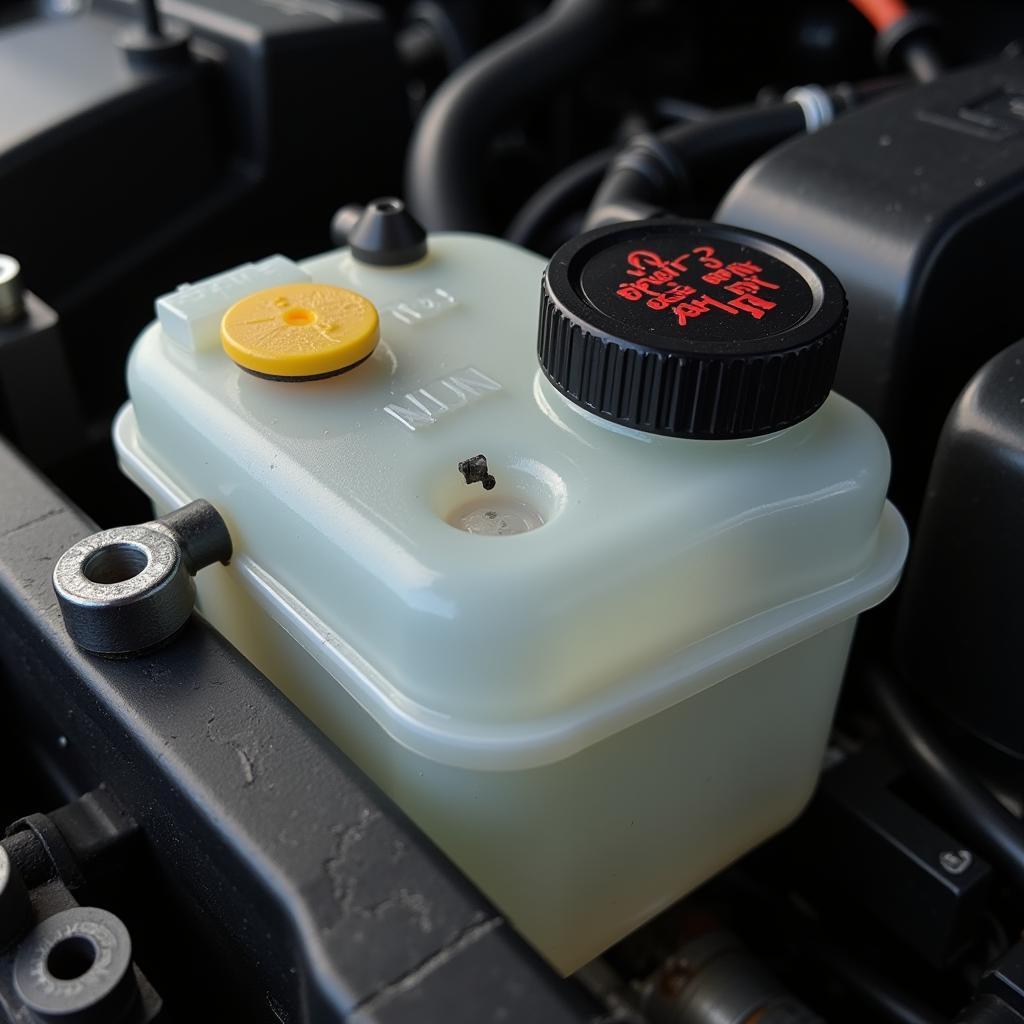Imagine this: you’re cruising down the road in your trusty 2003 Corolla when suddenly, the ABS and brake warning lights decide to illuminate your dashboard like unwelcome guests. It’s a scenario no driver wants to encounter, but fear not! This comprehensive guide will shed light on the possible culprits behind those pesky warning lights and guide you toward a solution.
Why Are My ABS and Brake Lights On?
Seeing those warning lights illuminate simultaneously can be alarming, but it’s essential to remain calm. This combination usually indicates a problem within your car’s braking system, which encompasses both the standard hydraulic brakes and the Anti-lock Braking System (ABS). Let’s delve into the most common reasons behind this automotive dilemma:
Common Culprits: Unveiling the Mystery
1. Low Brake Fluid Level: The Heart of the Matter
Brake fluid is the lifeblood of your car’s braking system. When the fluid level drops too low, it can trigger both the ABS and brake warning lights. This usually happens due to worn brake pads or a leak in the system.
What to Do:
- Check Your Brake Fluid: Locate the brake fluid reservoir under the hood (refer to your owner’s manual for its exact location).
- Inspect the Fluid Level: Most reservoirs have a “Min” and “Max” marking. If the fluid is below the “Min” line, it’s time to add more.
- Top Up with the Correct Fluid: Use only the brake fluid type recommended by Toyota for your 2003 Corolla.
- Inspect for Leaks: If the fluid level is consistently low, there might be a leak in the system. It’s crucial to have this inspected by a professional mechanic immediately.
 Low Brake Fluid Level
Low Brake Fluid Level
2. Faulty ABS Wheel Speed Sensor: The Eyes of Your ABS
Your Corolla’s ABS relies on wheel speed sensors to function correctly. These sensors monitor the rotational speed of each wheel and relay that information to the ABS control module. If a sensor malfunctions or gets clogged with debris, it can disrupt the ABS system and illuminate the warning lights.
What to Do:
- Visual Inspection: Check each wheel speed sensor for any visible damage or debris buildup.
- Testing with a Diagnostic Tool: A mechanic can use a diagnostic scanner to read the ABS codes and pinpoint the faulty sensor.
- Sensor Replacement: A malfunctioning wheel speed sensor will need to be replaced.
3. ABS Control Module Issues: The Brain Behind the System
The ABS control module acts as the brain of the Anti-lock Braking System. It receives signals from the wheel speed sensors and decides when to activate the ABS to prevent wheel lockup during hard braking. If this module experiences electrical faults or malfunctions, it can trigger the warning lights.
What to Do:
- Diagnostic Scanning: A mechanic will need to connect a diagnostic scanner to retrieve any stored ABS codes, which can help diagnose issues with the control module.
- Module Repair or Replacement: Depending on the severity of the issue, the control module might be repairable. However, in some cases, replacement might be necessary.
4. Worn-Out Brake Pads: The Unsung Heroes
Brake pads are your first line of defense when it comes to stopping your vehicle. As you apply the brakes, the pads clamp down on the rotors, creating friction to slow down the car. Over time, these pads wear down and require replacement. Severely worn brake pads can sometimes trigger both the ABS and brake warning lights, especially if they’re worn down to the metal backing plates.
What to Do:
- Inspect Your Brake Pads: Have a mechanic check the thickness of your brake pads.
- Brake Pad Replacement: If the pads are worn beyond the recommended limit, it’s crucial to have them replaced to ensure safe and effective braking.
FAQs: Addressing Your Concerns
Q1: Can I still drive my car with the ABS and brake lights on?
A: While you might still be able to drive, it’s strongly advised against it. A malfunctioning braking system poses a serious safety risk. It’s best to have your car towed to a trusted mechanic for diagnosis and repair.
Q2: How much does it cost to fix ABS and brake light issues?
A: The cost can vary greatly depending on the root cause. Simple fixes like adding brake fluid might be inexpensive, while replacing components like the ABS control module can be more costly.
Conclusion: Prioritizing Safety and Seeking Expert Help
When it comes to your 2003 Corolla’s braking system, ignoring warning lights is never the answer. By understanding the potential causes and following the recommended steps, you can address the issue promptly and ensure your safety on the road. Remember, a well-maintained car is a safe car! If you’re unsure about any aspect of diagnosing or repairing your car’s braking system, it’s always best to consult with a qualified mechanic.

